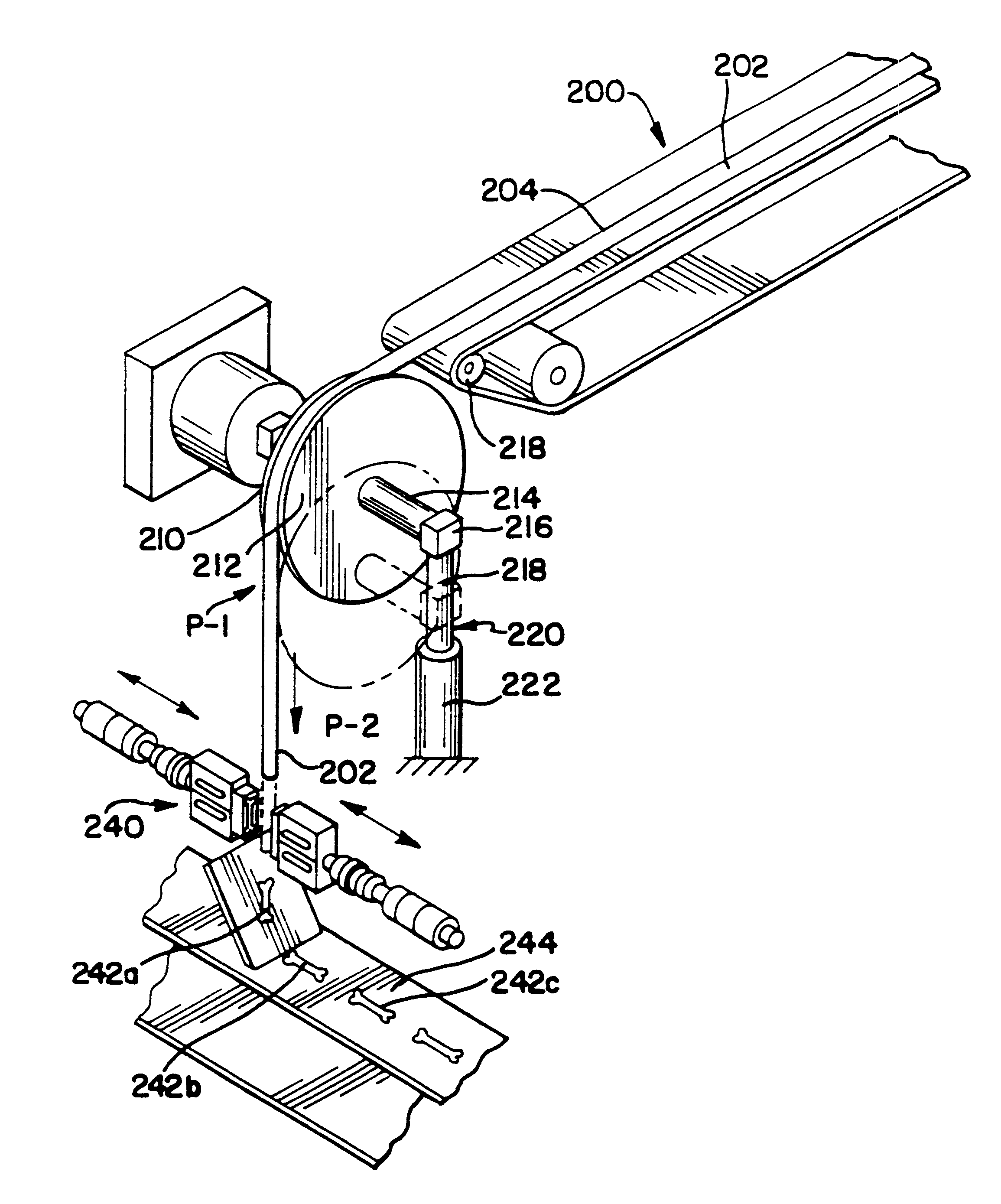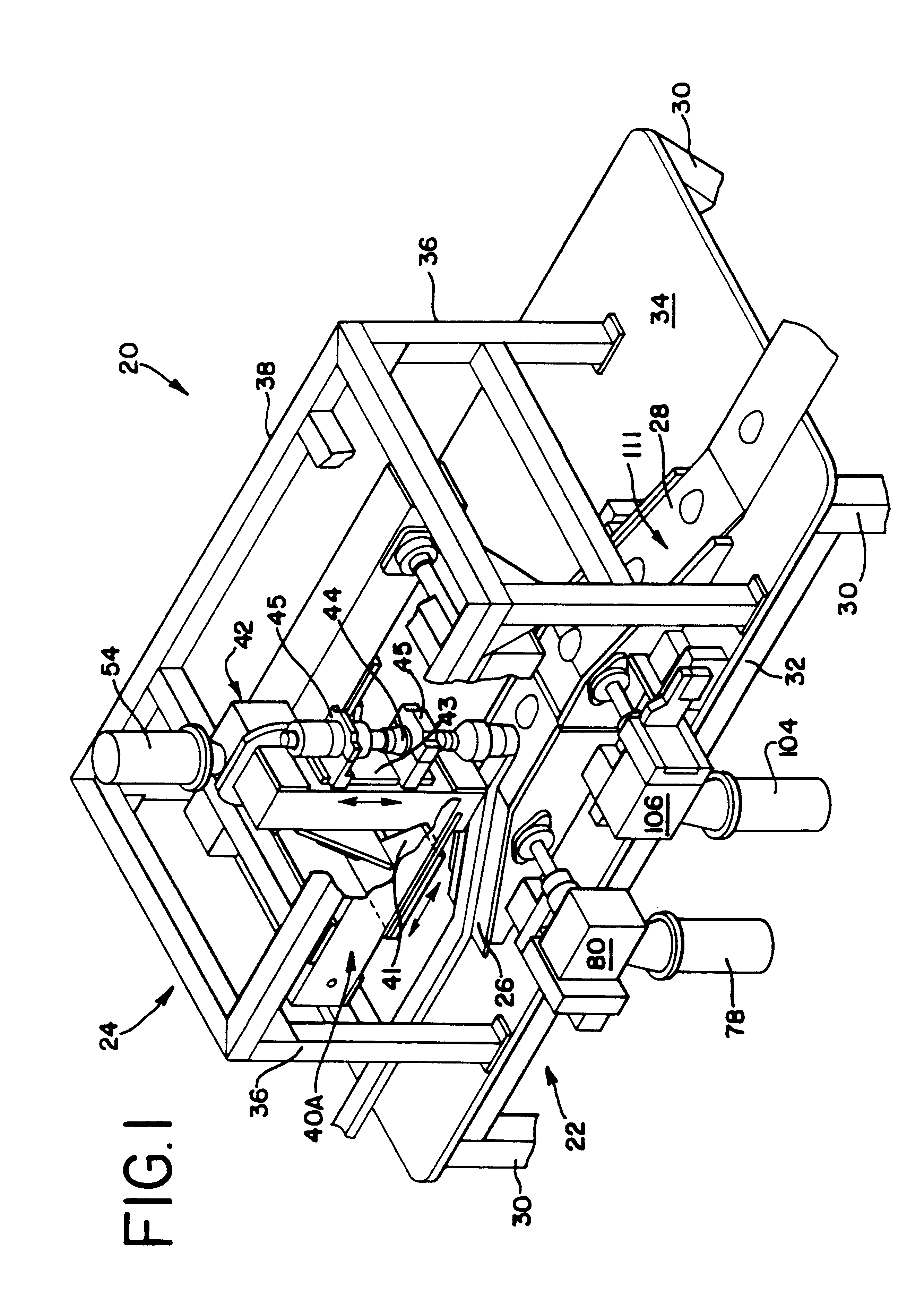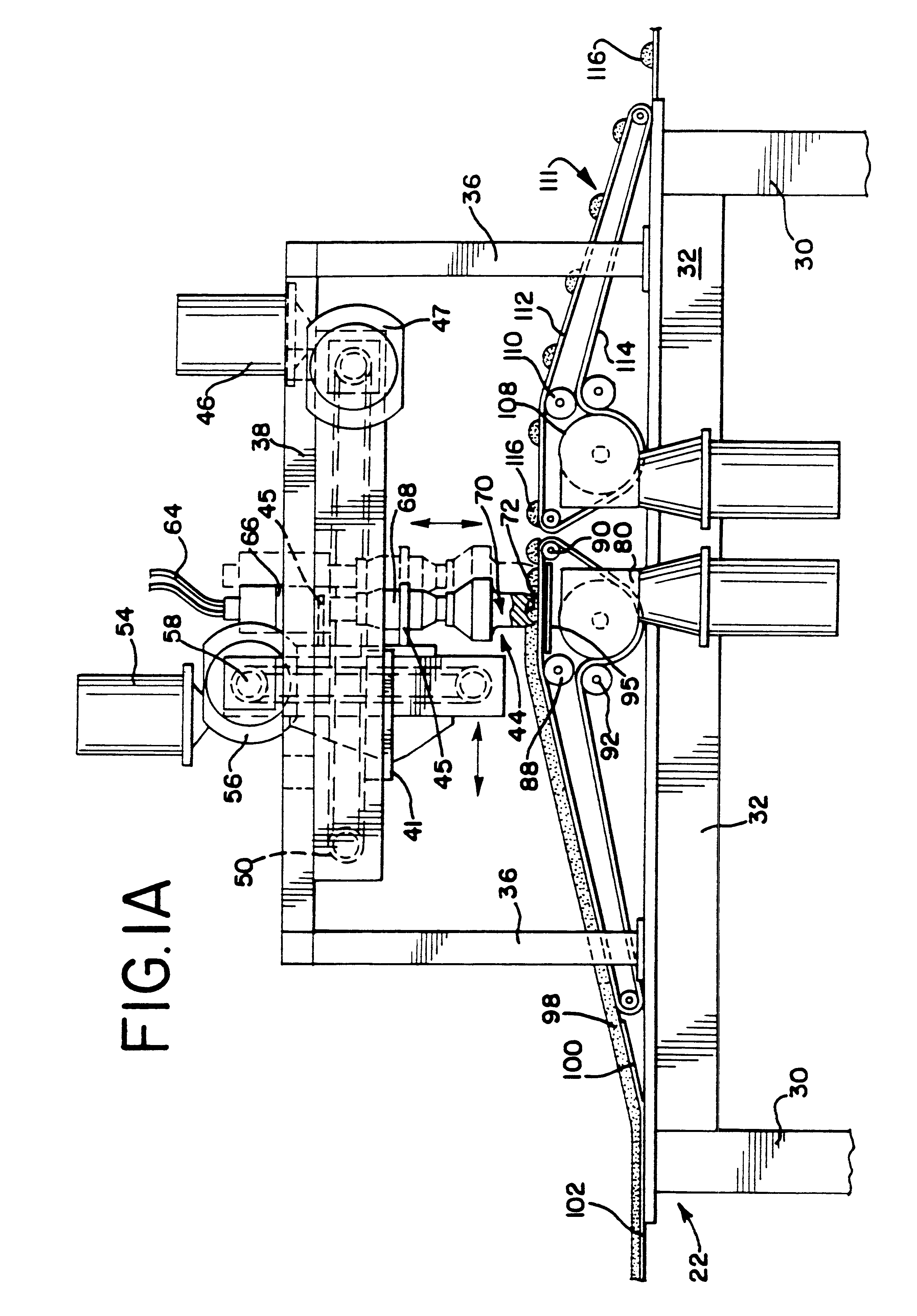Ultrasonic forming of confectionery products
a technology of ultrasonic forming and confectionery products, which is applied in the field of food product manufacturing, can solve the problems of not being able to achieve the same or similar ingredients in two different products at the same time, and many manufacturers have been unable to offer truly analogous products in shapes
- Summary
- Abstract
- Description
- Claims
- Application Information
AI Technical Summary
Benefits of technology
Problems solved by technology
Method used
Image
Examples
Embodiment Construction
The apparatus of the present invention is capable of being embodied in a number of forms, and the inventive process includes several methods all falling within the general ambit of the inventive concept.
Accordingly, by way of example only and not by way of limitation, a description will be given of several different forms of apparatus, each capable of practicing the invention and each having individual components capable of being varied in constructional details and arrangement. Illustrative methods, the steps of which may also be modified or altered somewhat in use, are also described herein.
Referring now to the drawings in greater detail, FIGS. 1, 1A and 2 show the invention to be embodied in a confectionery product cutting and forming apparatus generally designated 20 and shown to include a lower support frame portion generally designated 22, an upper frame section generally designated 24 and a pair of conveyor units, a food product input conveyor 26 and a food product output con...
PUM
| Property | Measurement | Unit |
|---|---|---|
| volume | aaaaa | aaaaa |
| w/w | aaaaa | aaaaa |
| temperature | aaaaa | aaaaa |
Abstract
Description
Claims
Application Information
 Login to View More
Login to View More - R&D
- Intellectual Property
- Life Sciences
- Materials
- Tech Scout
- Unparalleled Data Quality
- Higher Quality Content
- 60% Fewer Hallucinations
Browse by: Latest US Patents, China's latest patents, Technical Efficacy Thesaurus, Application Domain, Technology Topic, Popular Technical Reports.
© 2025 PatSnap. All rights reserved.Legal|Privacy policy|Modern Slavery Act Transparency Statement|Sitemap|About US| Contact US: help@patsnap.com



